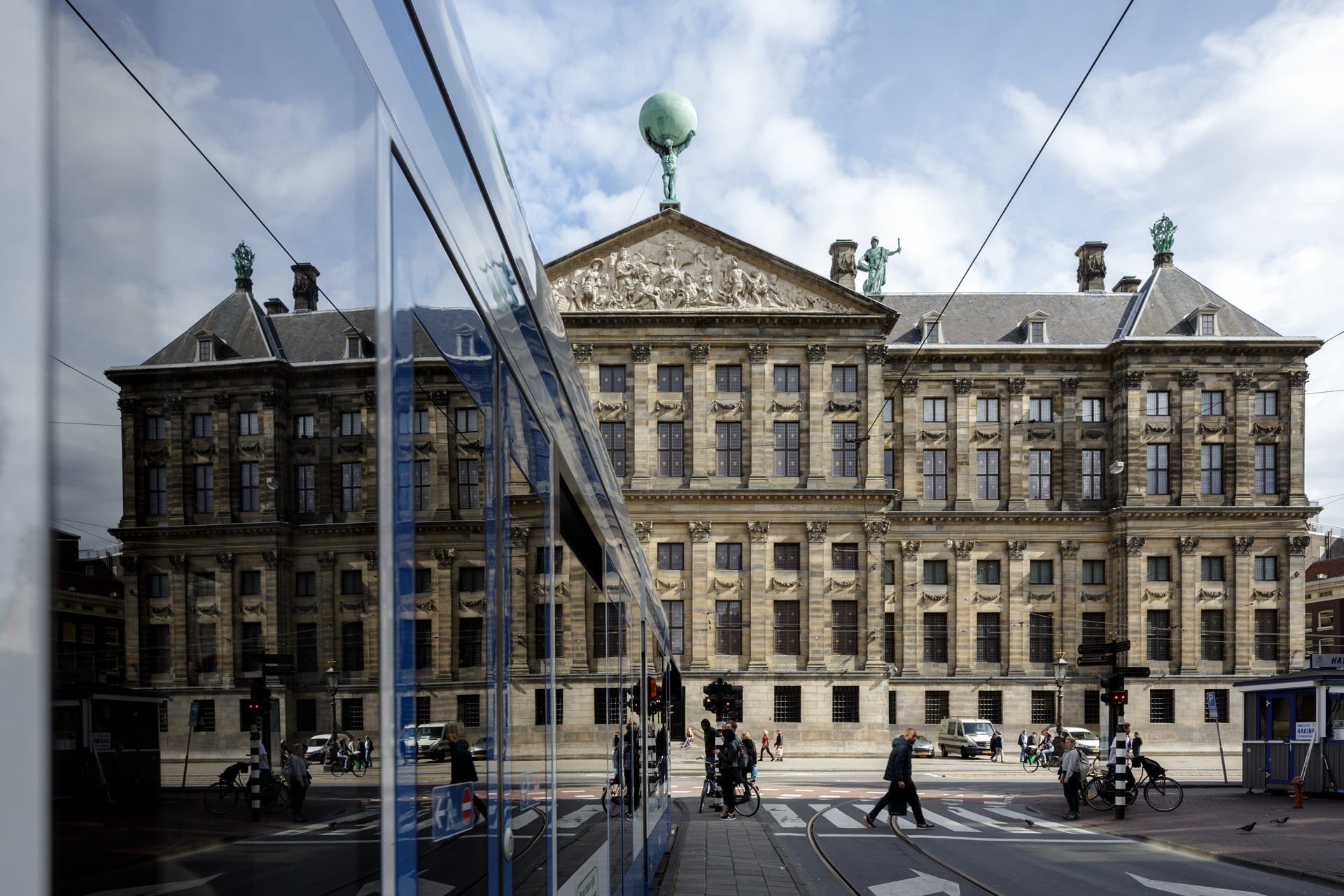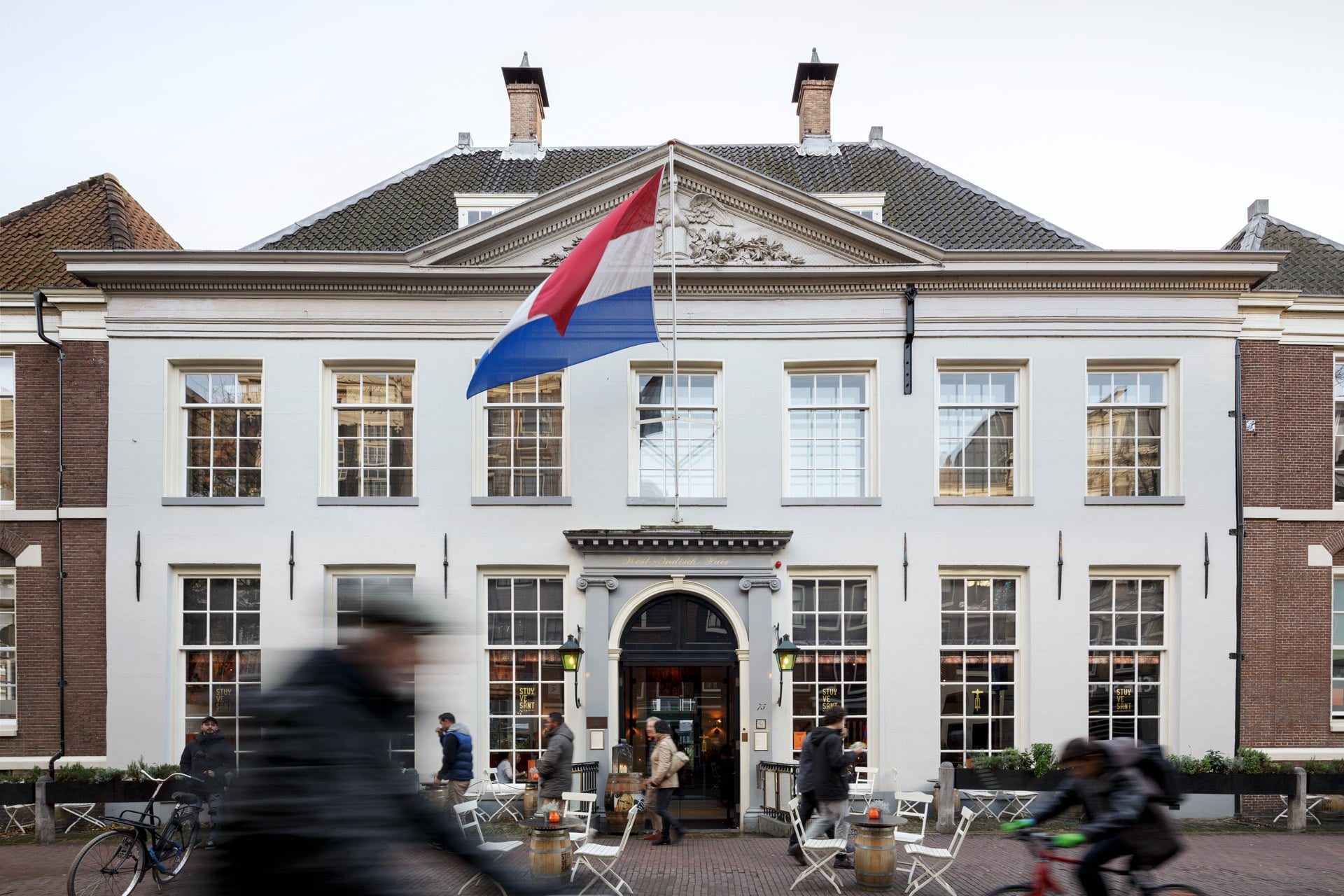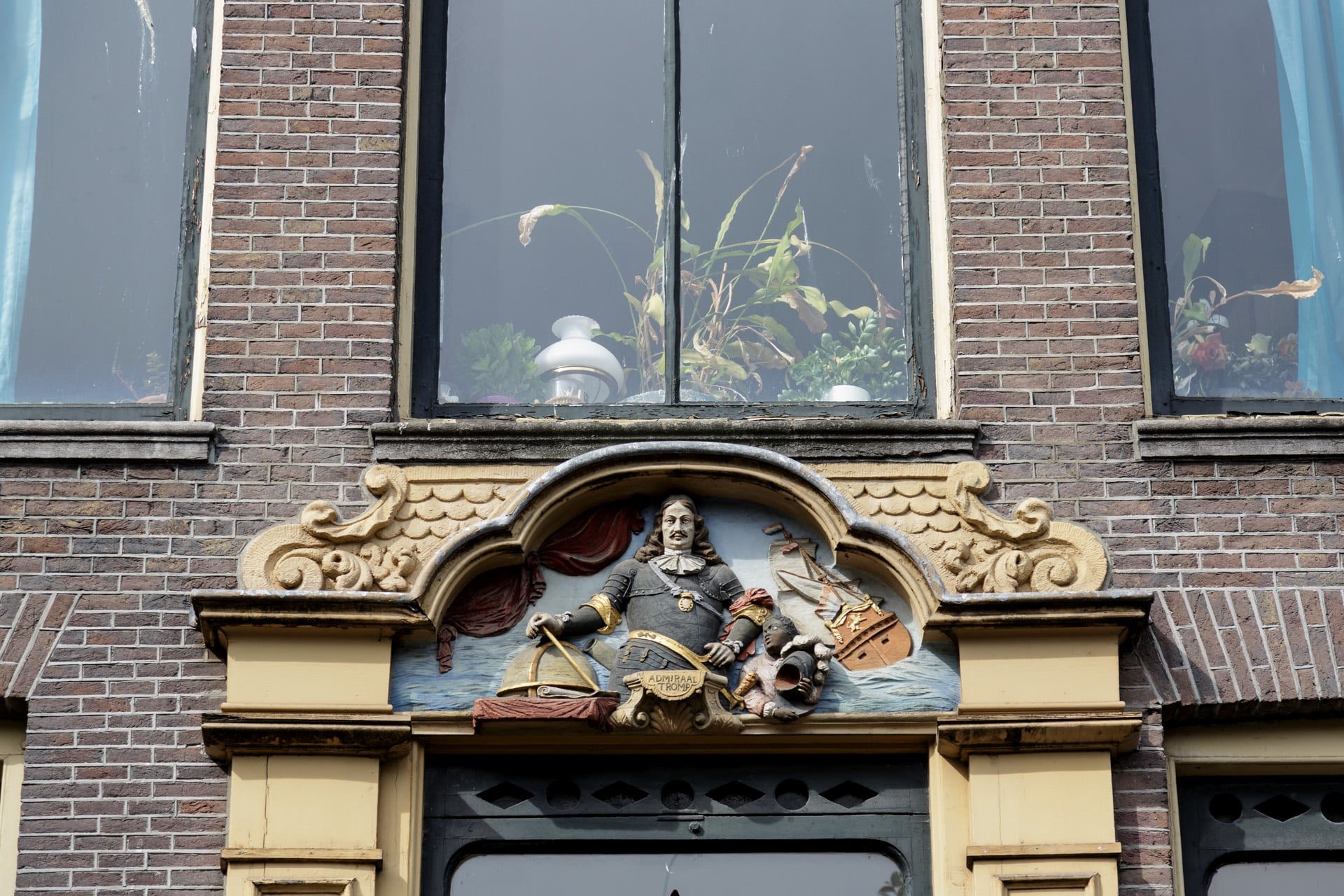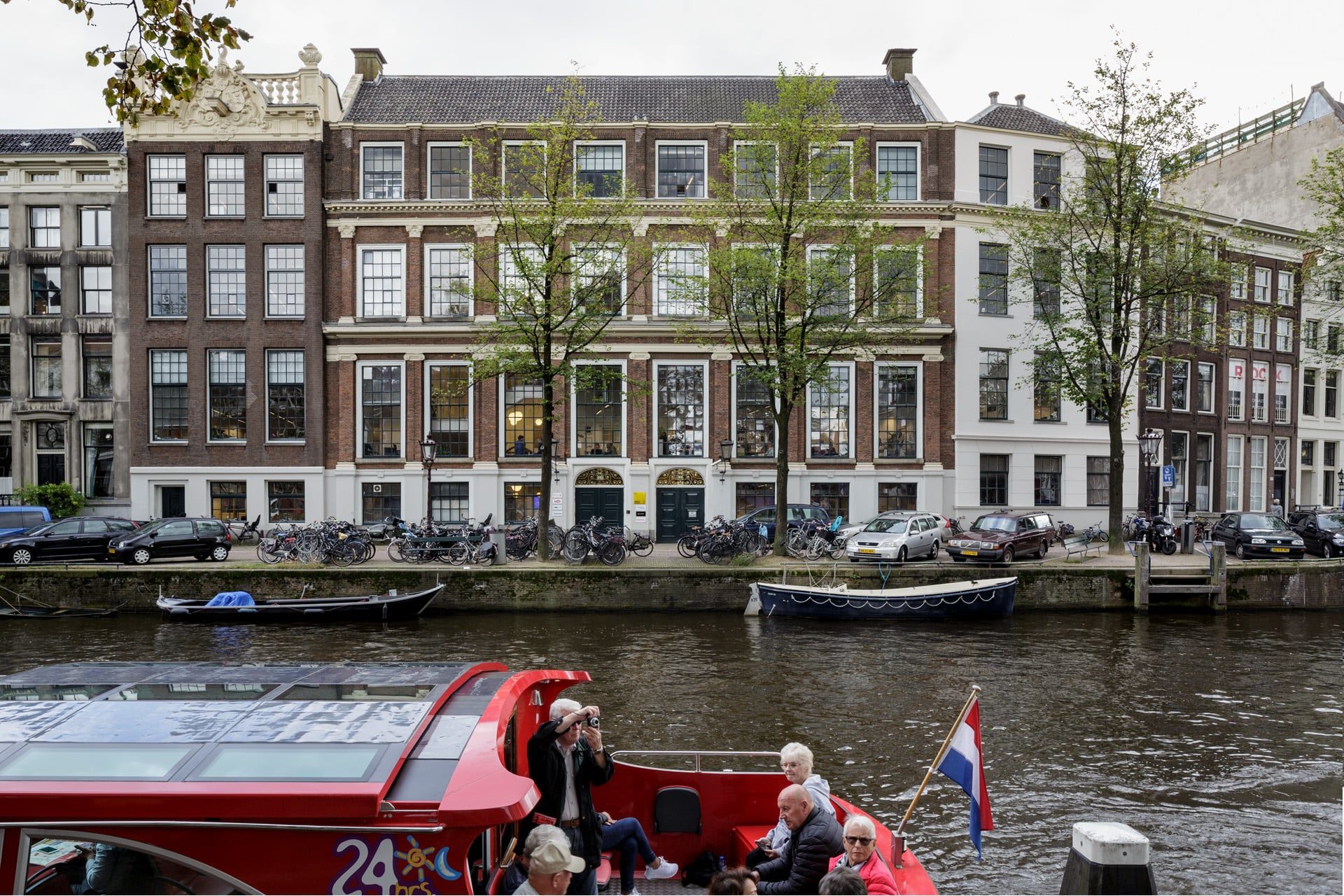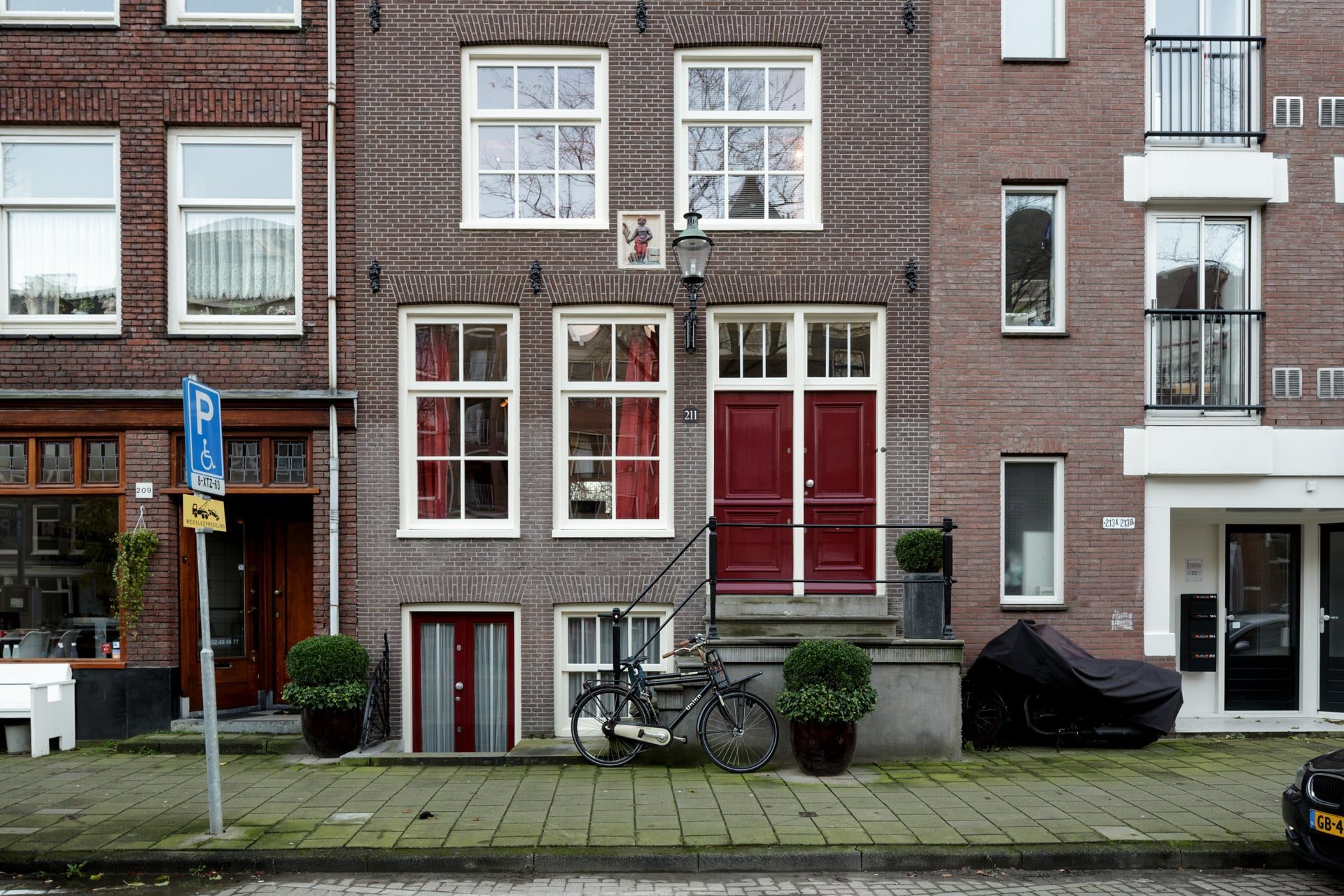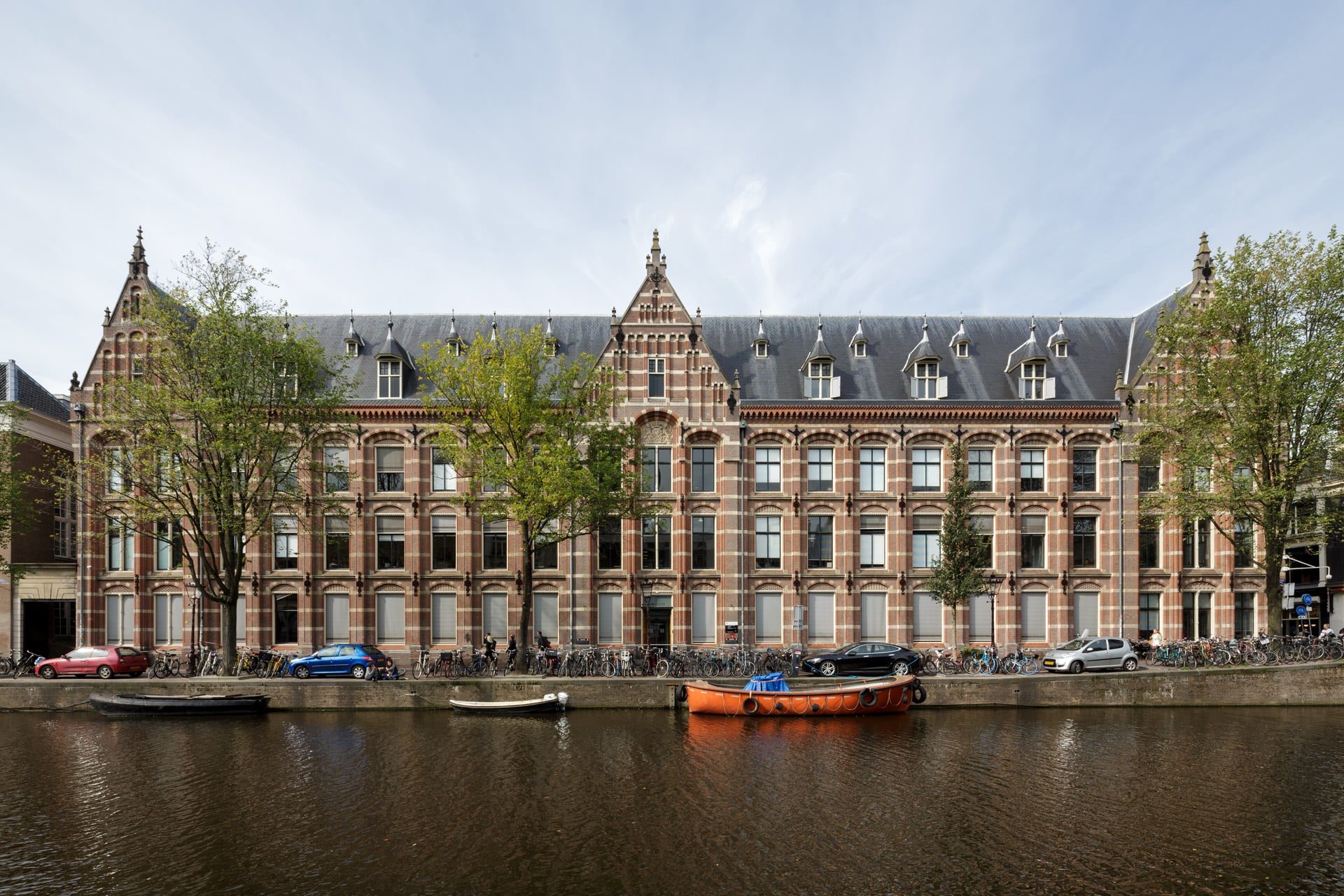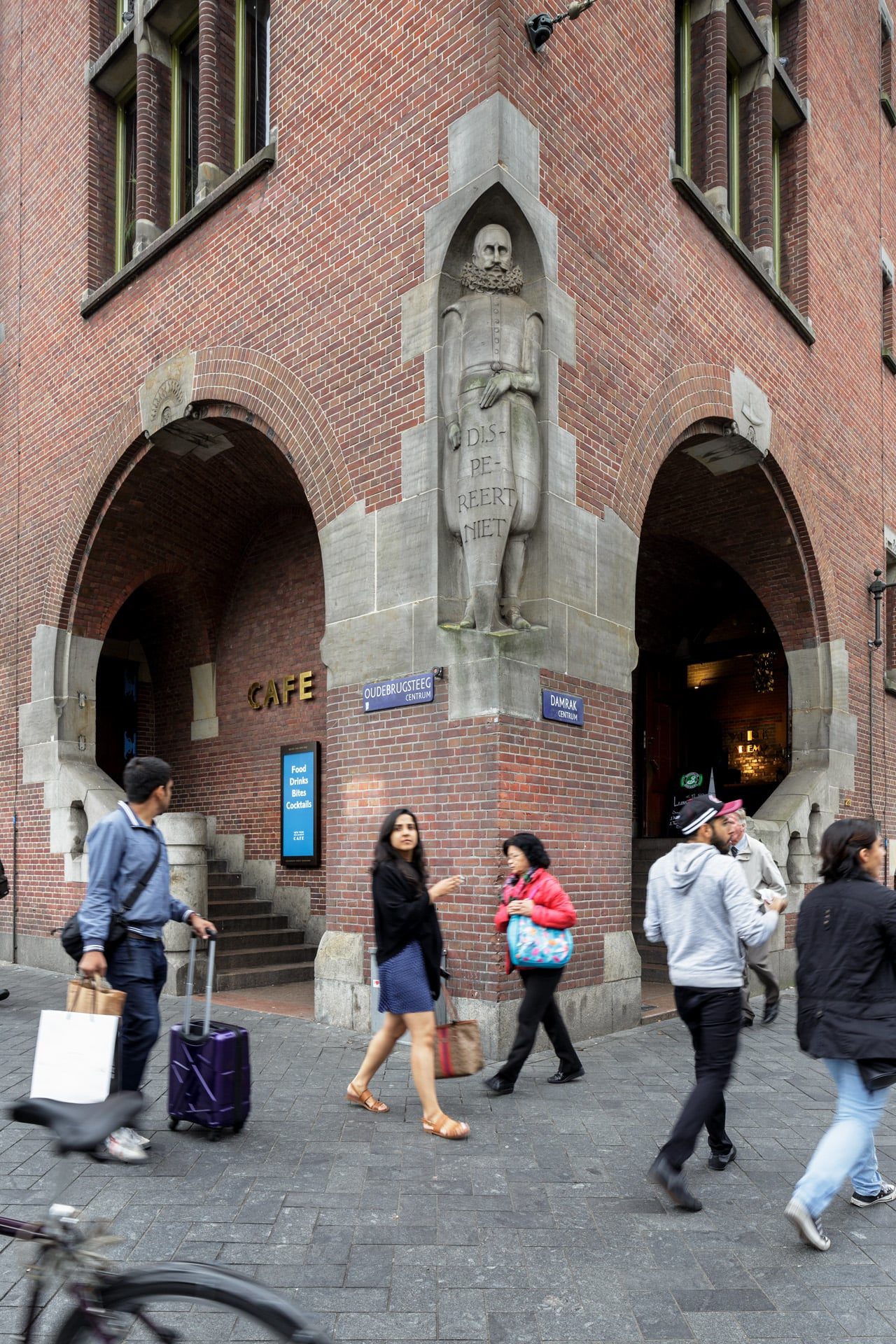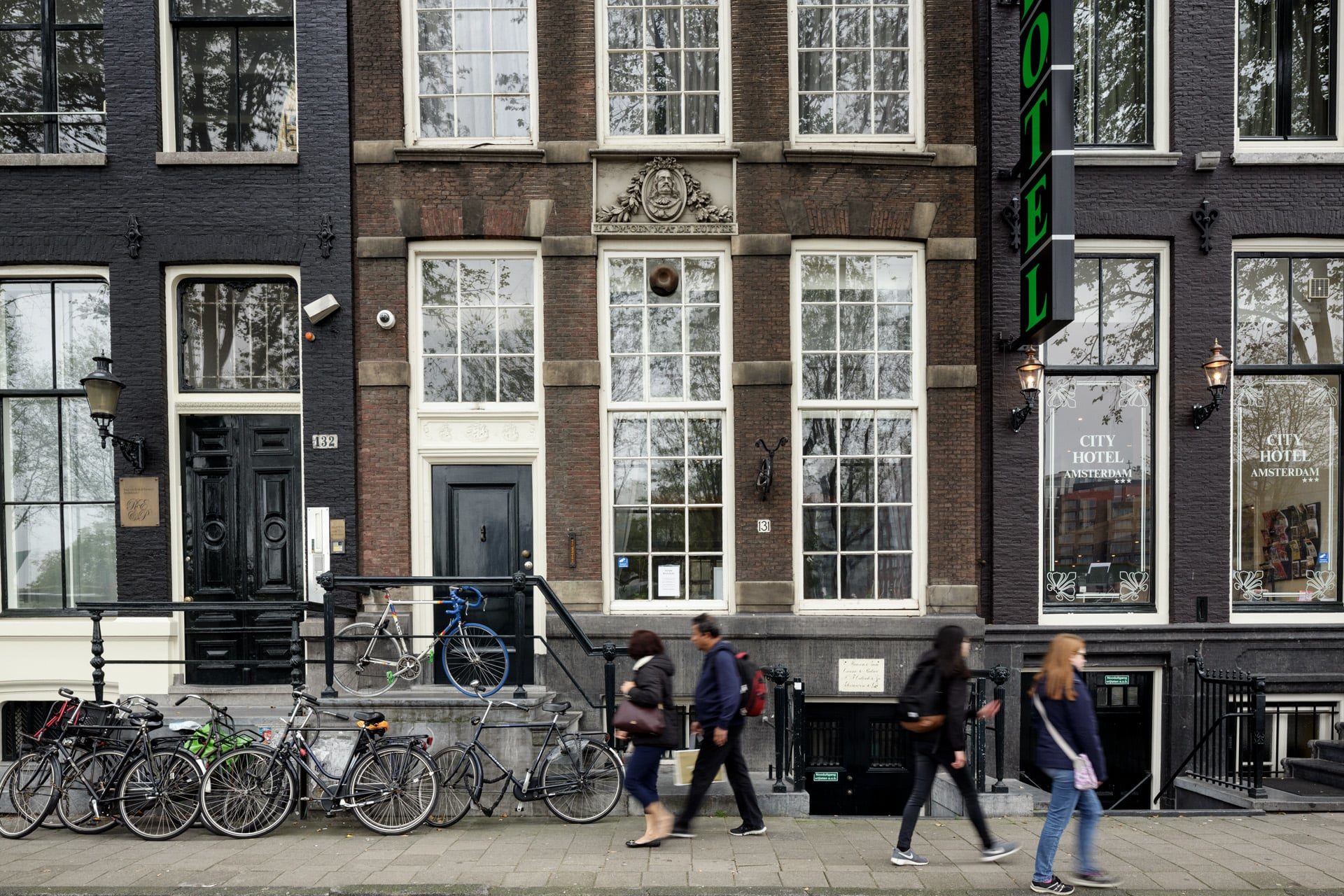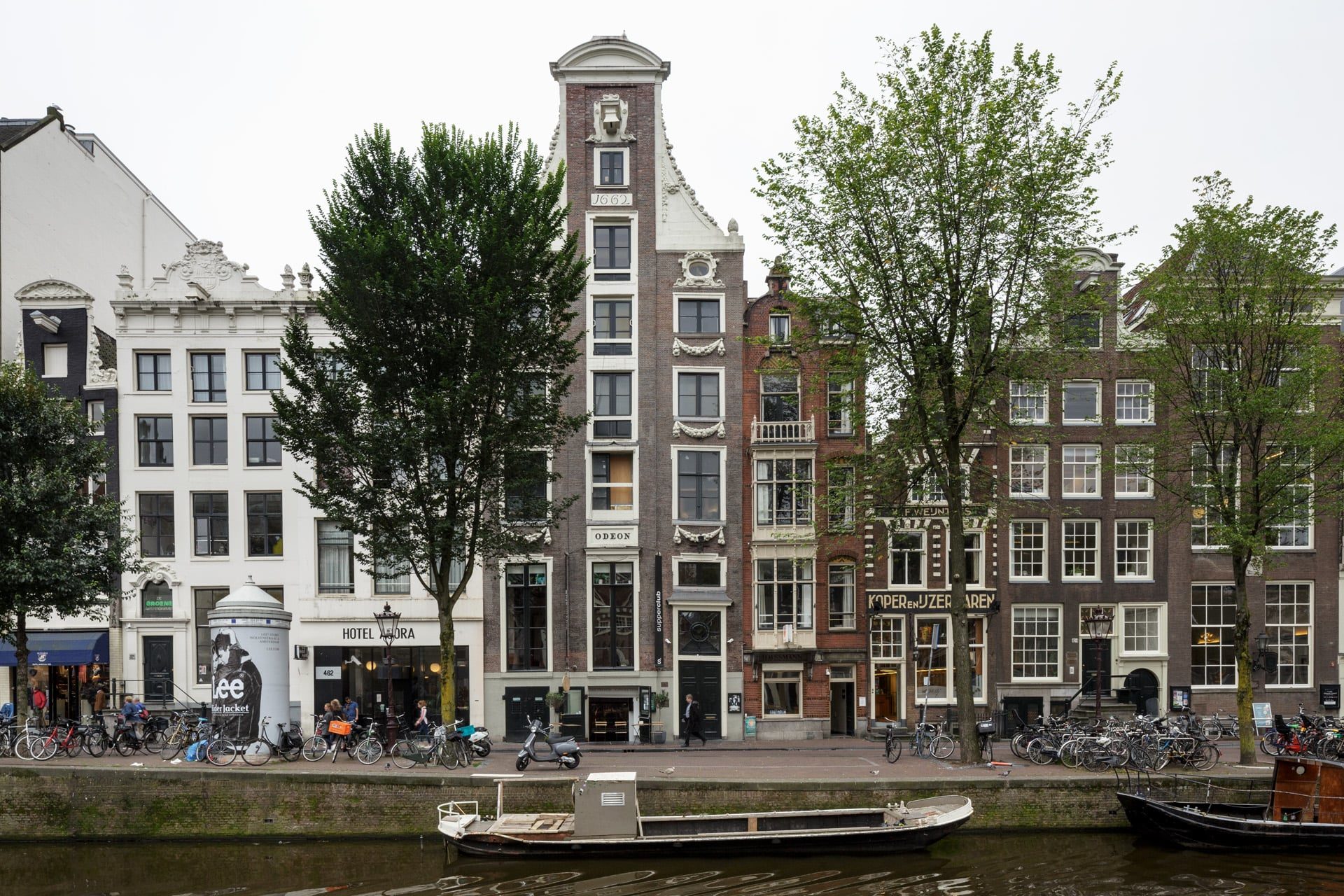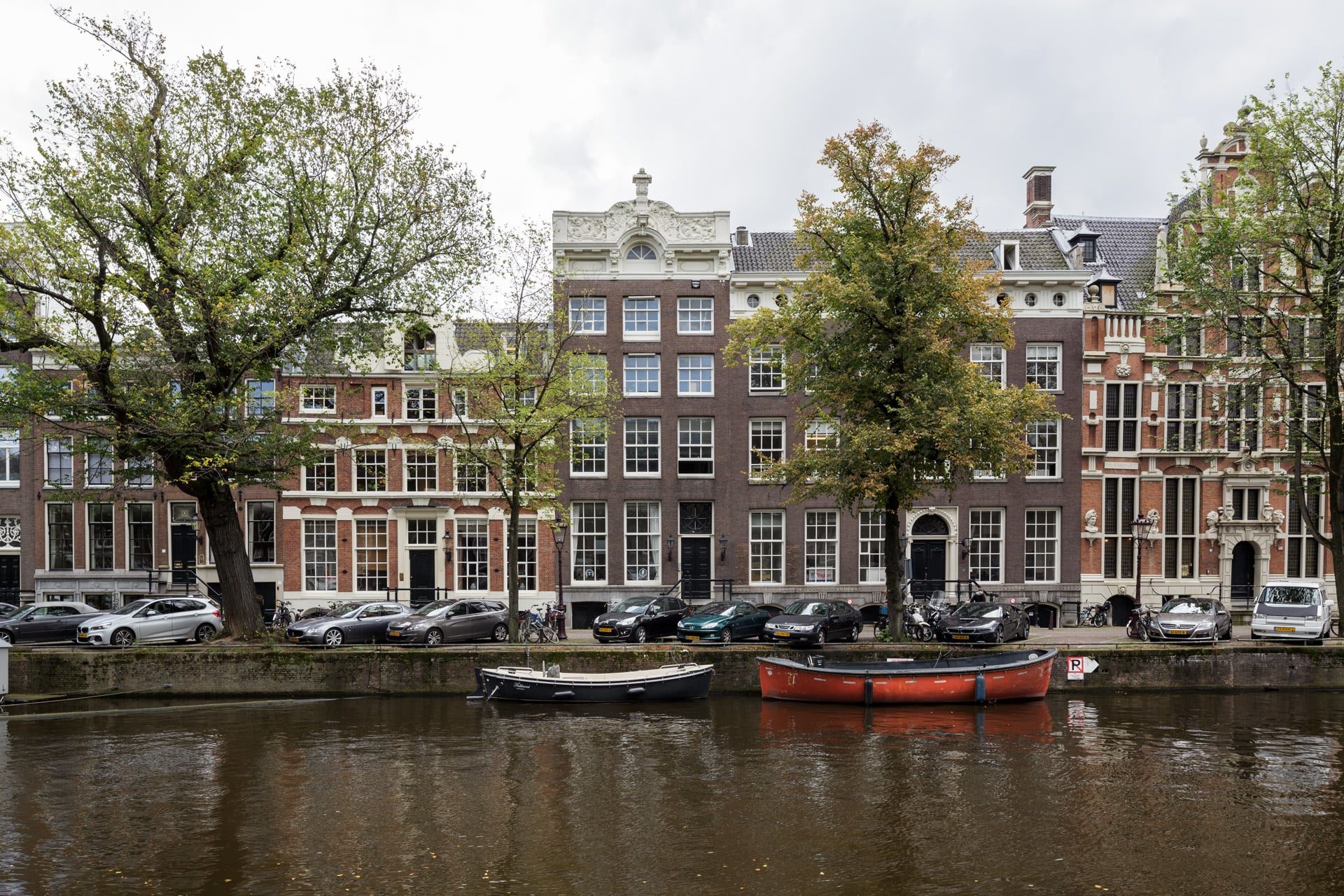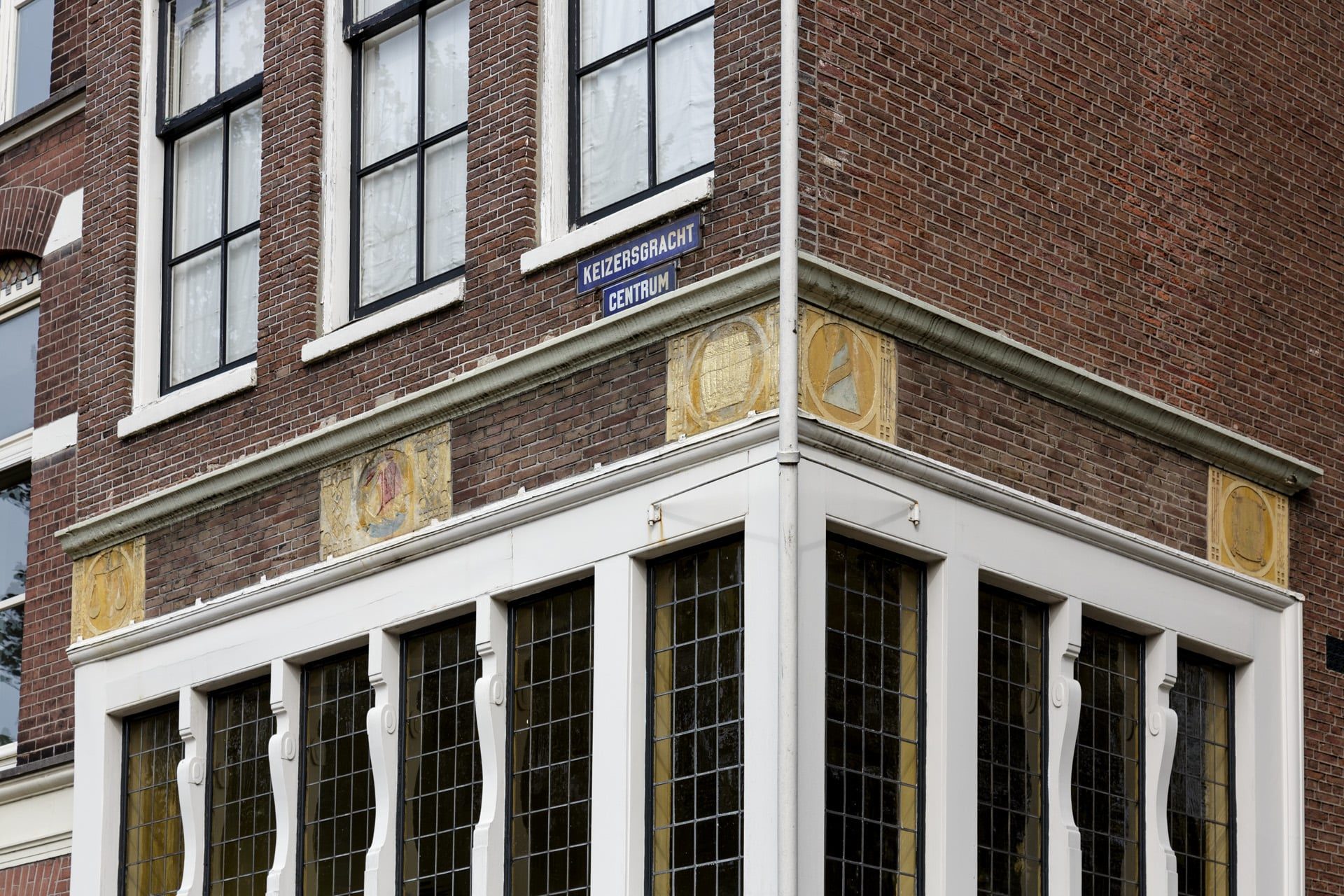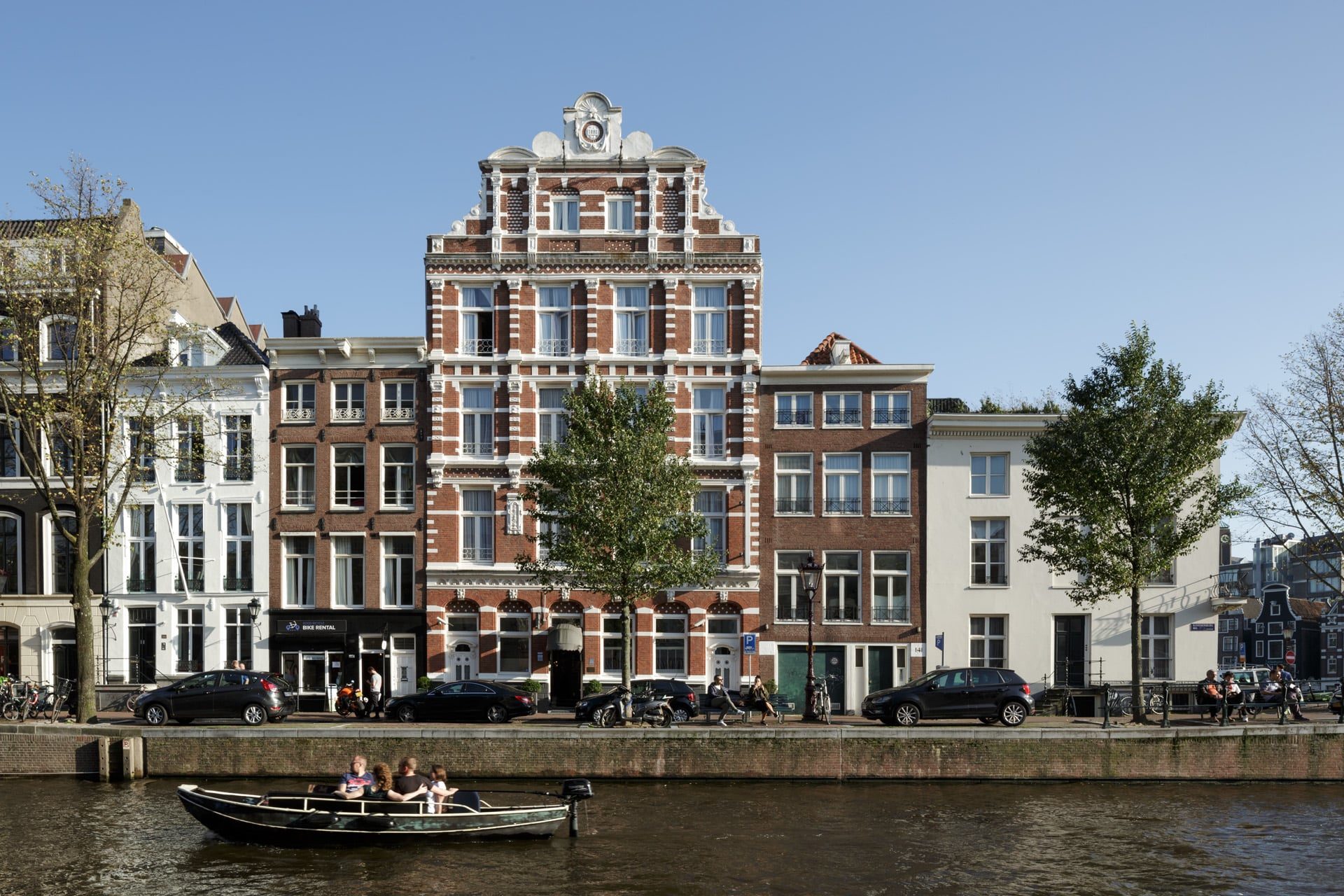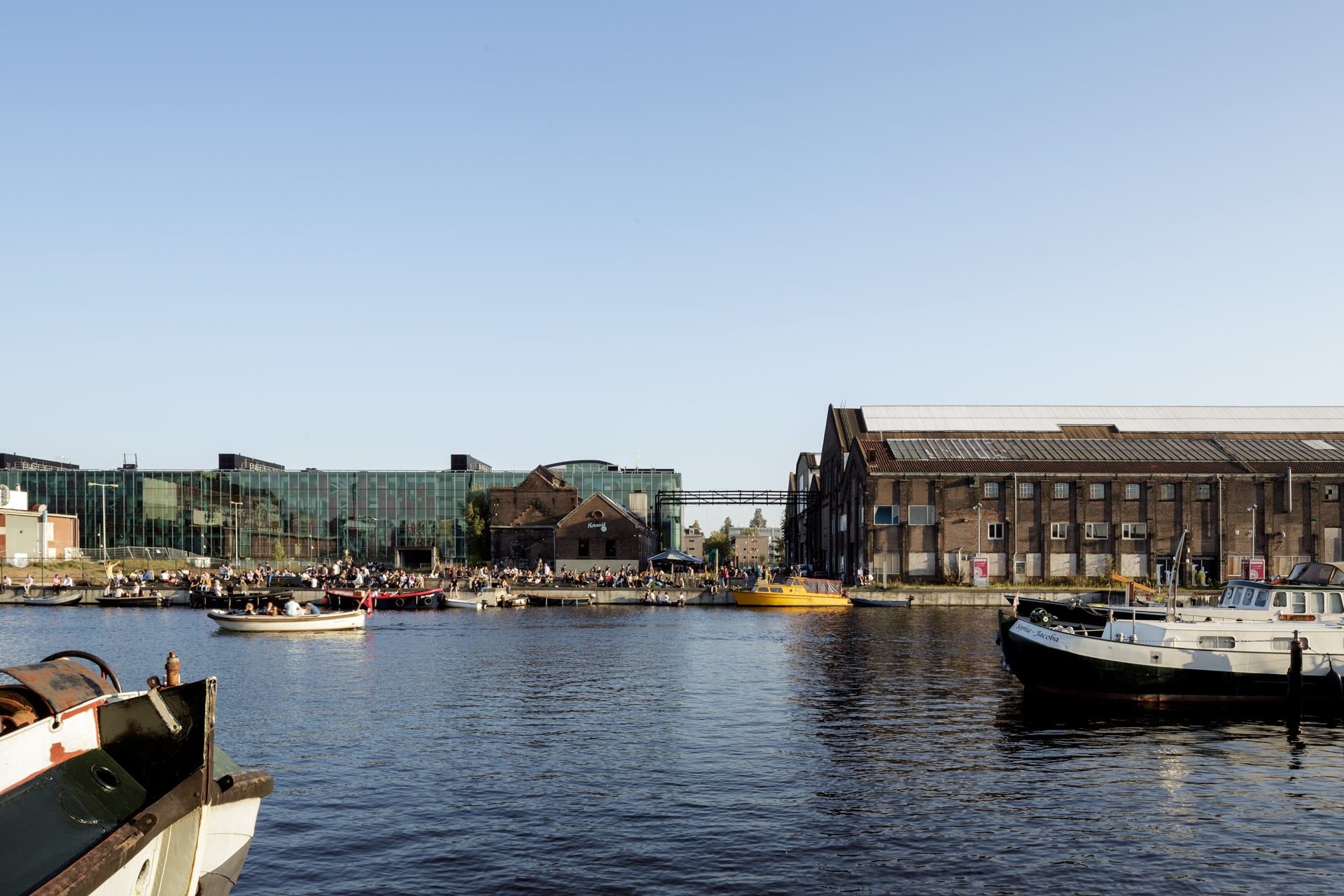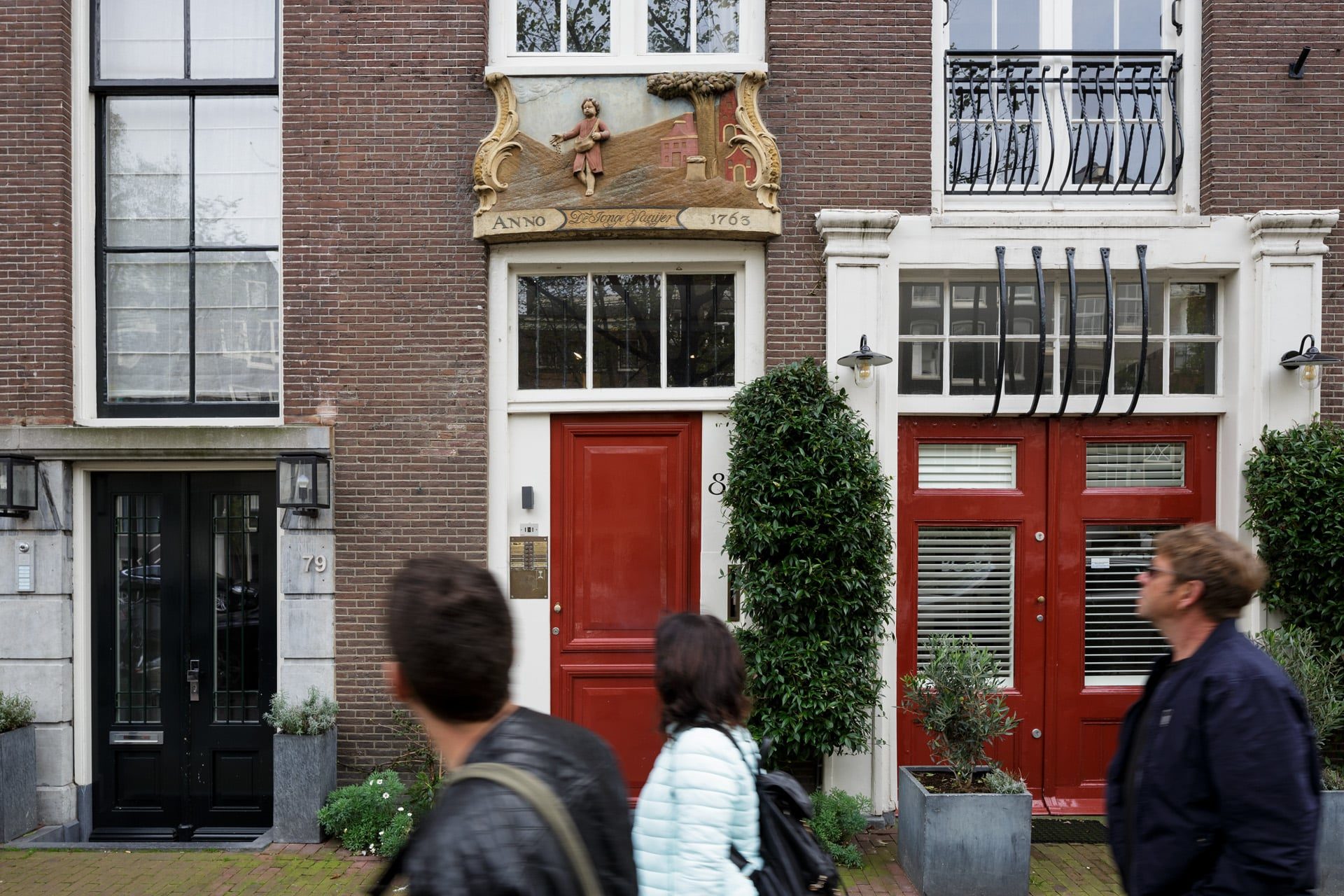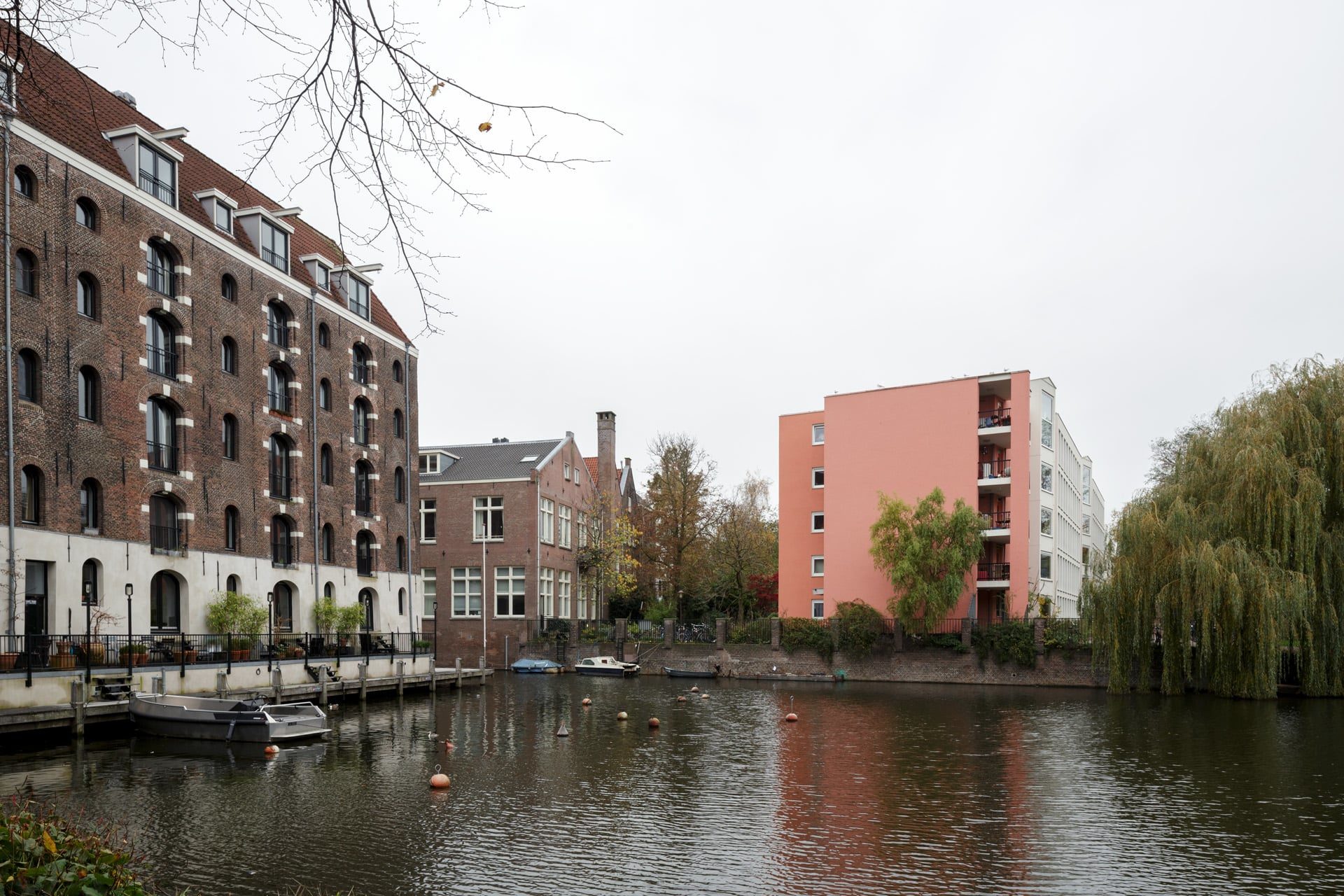Along the course of its winding waterways and the quays containing them, resides a city of fame and infamy alike. These narrow waters extend into broader channels — connecting the city’s very heart to the nearby sea. For centuries, they have carried with them the immense weight of both the material and the immaterial consequences of colonial expeditions overseas.
Much of Amsterdam’s historic center still bears witness to this past. Richly decorated houses huddled against each other flaunt the enormous wealth amassed during the city’s maritime history. Some of their tall facades pompously display the family crests of those that occupied them after construction, while others exhibit more subtle references to their owners’ affluence.
A little over a decade ago, city authorities started to increase spending on campaigns to attract more tourists. The historic city center in general, and the iconic canal ring in particular, became central to an extensive branding campaign in an effort to bolster the international allure of a city in fierce competition with its peers. Amsterdam’s campaign narrative began to dramatize the grandeur of its 17th century-expansion — nostalgically referring to the city as the world’s central material and intellectual warehouse. The campaign recollects Amsterdam as a fertile ground for the critical thinker and the clever merchant; a safe haven for the foreign outcast and the persecuted refugee. The origin of its dramatic economic boom is attributed to the virtues of its free and tolerant society, which allowed for international cooperation and trade to flourish — much in line with the national narrative on an era broadly referred to as the ‘Golden Age’. Yet under this masquerade of heroism and self-praise dwells the dire brutality of the Dutch colonial enterprise.
The first half of the 17th century saw the birth of two influential transnational corporations — the Dutch East India Company (VOC) and the Dutch West India Company (WIC) — which collectively came to shape much of the emerging Dutch empire. Following the Spanish and the Portuguese, their armed ships roamed the distant coastlands of Southeast Asia, Africa, and the Americas, in a quest to acquire natural and cultural products to be sold profitably on European markets. Much like their predecessors, the VOC and WIC relied heavily on the repression, manipulation and displacement of indigenous populations in an effort to secure their economic interests. Their nearly two-century reign was upheld with unwavering political support from the Dutch Republic, which facilitated them with a lucrative monopoly on the trade in human beings and goods — that is until the Republic overtook their activities itself.
In Southeast Asia, the existing economic structures were disrupted as part of the East Indian archipelago was transformed into a virtual labor camp for European markets. Colonial rulers inflicted a staggering amount of violence to eliminate any challenge to the extortive relationship between the Dutch state and its colonies. The Atlantic coast of Africa bore witness to the Dutch transport of over half a million enslaved people to plantations in the Americas, in a gruesome journey subsequently known as the Middle Passage. These plantations saw an unparalleled exercise in the disregard of human life, despite fierce resistance of the enslaved population. Over the course of centuries generations of enslaved people – women, children, and men – were abused, sold, mutilated, raped, stripped of their culture and forced to work the plantations out of a feverish thirst for profit. Those profits not only flowed back into the pockets of plantation owners in Amsterdam, but fuelled an entire economy of building contractors, insurers, bankers, manufacturers, and ultimately the treasury of the Dutch state itself. Investments made by these colonial profiteers into the very fabric that makes up the city keeps Amsterdam inseparably connected to the suffering that subsidized it.
It is a particularly difficult balancing act for Dutch citizens of Caribbean and Southeast Asian descent to come to terms with a city that fails to recognize the blood that runs through its veins. They call home, and come of age in, the streets and squares named after the same brutal tyrants that once tormented their ancestors. This predicament may be glaringly obvious to some, but the nation’s apparent indifference to it speaks volumes on the underlying, curious case of race relations in the Netherlands.
Recent years have however witnessed some creditable and fruitful efforts to disclose the city’s colonial heritage to the public. A few excellent independent initiatives, both academic and practical, managed to identify a wealth of architectural sites in Amsterdam that are somehow tied to the history of slavery and colonial exploitation. These initiatives, including Mapping Slavery and Black Heritage Tours, go on a scavenger hunt to uncover stories of untold grief via the many clues that the city provides. Those that observe closely will find references all around — within mansions and storehouses; on the faces of plaques and gable stones. There is something eerily gratifying about the notion that, in absence of history’s due recognition, the stones and waterways that compose the city of Amsterdam somehow still manage to speak for themselves.
The city of Amsterdam is riddled with references – both direct and indirect – to the Dutch history of slavery and colonial exploitation. The photos and descriptions of places in the city in this article comprise a small, illustrative selection of sites.
For some time in the 17th century, the Royal Palace – originally built as the city town hall – housed the Society of Suriname, which was assigned the task of governing the colony of Suriname. The Society did so on behalf of the colony’s owners, among which was the city of Amsterdam itself – rendering it a prominent ‘owner’ of enslaved people.
The Dutch West India Company (WIC) was founded in 1621 as a Western counterpart to the United East India Company (VOC) in the Eastern Hemisphere. The Dutch state awarded the WIC with a monopoly on the trafficking of more than half a million enslaved humans from several parts of Western and Central Africa to The Americas. Over its nearly two-century lifespan, the WIC was headquartered at a number of different locations in Amsterdam, some of which have been torn down since (such as Singel 425, where the current Library of the University of Amsterdam is housed). The building pictured was its headquarters from 1623 to 1647.
Within the most plush section of the Herengracht lies what is today the mayor’s residency. In 1672 this house was occupied by Paulus Godin, who served as governor of the Dutch West India Company (WIC) and director of the Society of Suriname. In this capacity, Godin was responsible for the mass transportation and exploitation of enslaved people in the Americas. The front entrance now contains a commemorative plaque for the enslaved – a rarity in Amsterdam.
The sculptures of these two people refer to the activities of the Van Hoorn brothers, who inhabited this house in the 18th century. Henrik van Hoorn served as director of the Dutch Berbice colony – in what is now Guyana – which saw a year-long rebellion from enslaved people in 1763 against the brutal treatment of Dutch settlers. The Van Hoorn brothers’ fortune was also derived from their sugar refinery in Amsterdam.
The notorious Insinger family spawned a long line of generations, involved in the trade of enslaved people to Suriname, and their exploitation within the colony. The Insingers possessed several large mansions spread across the canal ring, among which is this estate. They operated as financiers of various plantations from 1779 until the formal abolition of slavery in 1863. After the formal abolition, the Insingers were compensated for their ‘losses’ by the Dutch state, whereas the enslaved population was forced to work the plantations for another ten years. The Insinger bank is currently still in operation.
In this depiction, an African boy – who is left unnamed by the artist – is held enslaved by Cornelis Tromp, a sea captain in the Dutch navy.
The Coymanshuis, currently the stately Amsterdam office of Amnesty International, carries a double link to the Transatlantic slave trade. The Coymans trading company, active in the slave trade to the Spanish Caribbean colonies, took office in this building in the 17th century. In the mid 18th century the estate became home of Jan Pieter Theodoor Huydecooper, director of the Dutch West India Company (WIC).
A gable stone depicting a black man holding tobacco leaves, two baskets and a few bales. Tobacco was a colonial ware, harvested by enslaved people in the Americas.
The Dutch East India Company (VOC) headquartered the original Bushuis/Oost-Indisch Huis until its dissolution in 1798, after which the Dutch colonial administration took seat here for the next ten years. The original building was torn down around 1890 to make space for the current neogothic building, which now houses the Humanities Faculty of the University of Amsterdam. Recent years have seen an ongoing debate within the university about the presentation of a decorated ‘VOC boardroom’ in the building, without any reference to the VOC’s legacy of violence.
Contrary to popular belief, the VOC (1602-1800) was deeply involved in the slave trade and the exploitation of both native populations, as well as forcibly migrated individuals, to different regions in Southeast Asia. In fact, until the late 18th century, the VOC surpassed the WIC (Dutch West India Company) with the number of people it held enslaved (75,500 people in ‘The East’ versus 64,000 people in ‘The West’, around 1750).
Sculpture of VOC officer Jan Pieterszoon Coen, who commanded the total extermination of 15,000 natives of the Banda Islands in the Moluccas, Indonesia. The execution was advised by Jacques l’Hermite, after the native population refused to trade solely with the Dutch. The sculpture is an ornament to the famed stock exchange building designed by Hendrik Petrus Berlage, which opened in 1903.
Michiel de Ruyter – depicted here on the gable stone of his former home – is easily the best-known Dutch admiral. He fought the English and French along the Western coast of Africa to secure major slave ports for the Dutch state. Among these was the notorious slave port of Elmina (in what is now Ghana), which played a major role in the Dutch transatlantic slave trade.
In contrast to Great Britain, the Netherlands never spawned any significant abolitionist movements. This lacking inspired abolitionist Anna Amalia Bergendahl (1827-1899) to found the ‘Ladies Committee for the Promotion of Evangalization and Abolition of Slavery in Suriname’. Within the walls of what is currently nightclub Odeon, the women of the committee held a lottery in 1857, dedicating the proceeds to liberate 79 enslaved people.
In his capacity of admiral to the Dutch East India Company (VOC), Jacques l’Hermite advised the extermination of the entire population of Indonesia’s Banda Islands of around 15,000 people. He saw his advice followed by VOC officer Jan Pieterszoon Coen and his troops in 1621 when an estimated 14,000 women, children and men were slaughtered and replaced with enslaved peoples from elsewhere in the region. Jacques l’Hermite was also a large stockholder in the Dutch West India Company (WIC), which allowed him to live in two notable buildings on Keizersgracht.
The symbols depicted on these gable stones represent aspects of the processing and trading of sugar. To produce sugar, sugarcane was harvested, pressed and boiled by enslaved people in the Americas. Depicted from left to right (excluding the second panel) are a set of scales, a cog, a barrel, sugar loaf and a bale.
The Netherlands Trading Company (NHM) depicted here is the successor to the Dutch East India Company (VOC). King Willem I ordered a revival of the exploitation of the Dutch East Indies in 1830, upon which the NHM implemented a system of forced remittance of specified crops by the native population. Consequently, natives suffered widespread famine.
This 1920 building depicts two Javanese women at the front entrance. The left figure of the three towering above is Jan Pieterszoon Coen, responsible for the extermination of around 14,000 natives of the Banda Islands in the Moluccas, Indonesia, in 1621. Depicted to his right are Herman Daendels and Joannes van Heutsz, both of whom were high officials during the colonial occupation of the Dutch East Indies. This location now serves as the Amsterdam City Archives.
This was the towering home to one of the many lesser known plantation owners who took up residence in the canal ring of Amsterdam; Thomas van Zwammerdam held two sugar plantations in Suriname. A year after he died, slavery was formally abolished in 1863 – yet the enslaved population was forced to work the plantations until 1873. His wife was compensated in line with her inheritance for her ‘losses’ as a consequence of the abolition. Other plantation owners were awarded similar compensations.
This site, currently utilized by creative organizations and cafés such as Roest, once housed the Dutch East India Company’s (VOC’s) massive shipyard, warehouses and offices.
Gable stone of sugar refinery ‘De Jonge Saayer’, which was located here in the 18th century. The raw sugar to be processed on site came from various plantations in Suriname, Brazil and the Dutch East Indies.
This location was home to De Eendracht – one of the many privately owned shipyards in Amsterdam. Here, slave ship De Leusden was built. On November 17th, 1737, De Leusden set sail from the slave port Elmina (in what is now Ghana) – carrying 716 enslaved Africans to Suriname. A large death toll among the enslaved population was common to such journeys – De Leusden for example had a mortality rate of 27 percent -, due to the squalid conditions in the ship’s hold, rampant disease and high rates of suicide among the enslaved. This particular journey became fatal to almost all of the enslaved aboard, when the ship hit a sandbank and sank down the Marowijne river in Suriname on January 1st, 1738. Out of fear for a revolt, the crew rushed to nail the hatches shut to the ship’s hold, where the enslaved were trapped – drowning 700 people. Only 16 Africans were kept on deck to aid the crew with its escape – all of whom were sold to work the plantations two weeks later. De Leusden’s shipwreck is the largest maritime disaster in Dutch history.

